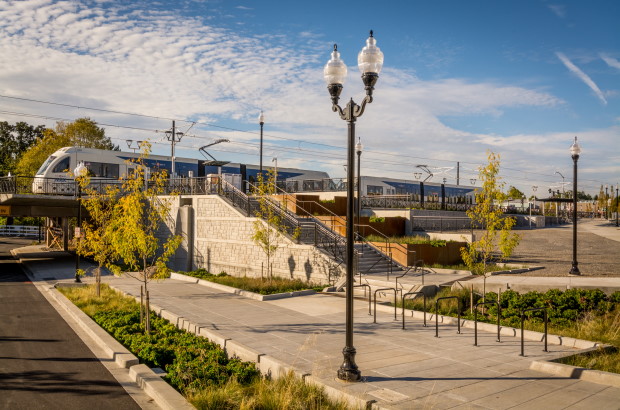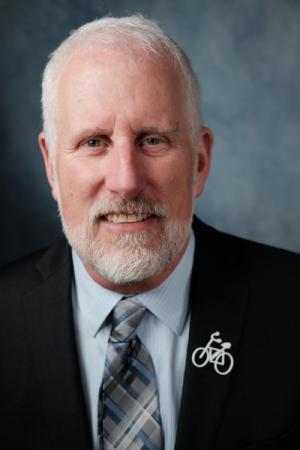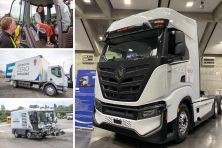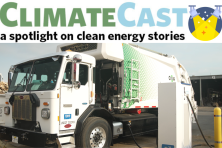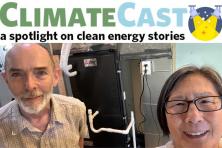The Let’s Get Moving 2020 ballot measure (Measure 26-218) will deliver urgently-needed, community-driven transportation investments throughout the Portland metro area, while reducing climate pollution, traffic deaths and congestion; that’s why Climate Solutions has endorsed it.
We recently interviewed Mark Gamba, Mayor of Milwaukie, Oregon, asking him about how he participated in the process to shape Measure 26-218, what transportation improvements he’s most excited about for his constituents, and where he sees growth opportunities for our region in the decades to come.
Q: Mayor Gamba, you served on the regional task force that developed Measure 26-218. What drew you to participate in this process?
A: I’ve supported numerous transportation projects, both before and during my time as Milwaukie’s mayor. This measure is a big opportunity for Milwaukie and the entire Portland metro region to invest in transportation solutions for today and the decades to come. The transportation sector is also our state’s biggest source of global warming emissions, and the projects in this measure do quite a bit to cut our climate pollution, reduce our Vehicle Miles Traveled (VMTs, i.e., car trips), and set us up for a more sustainable future.
Q: What do you see as Measure 26-218’s key benefits for your Milwaukie constituents and Clackamas County residents?
A: The projects included in the Let’s Get Moving 2020 ballot measure are part of a cohesive plan that will provide benefits throughout the Portland metro region. My belief is that improvement projects don’t have to be within Milwaukie city limits to benefit our community.
With that said, I’m particularly excited about the proposed improvements on McLoughlin Boulevard and the Sunrise Corridor (Hwy 212). McLoughlin is a hot mess right now. It’s a high-crash corridor and dangerous for pedestrians, with few safe crosswalks for miles. The ballot measure will invest in numerous safety improvements and lay the foundation for better, more efficient transit service.
The Sunrise Corridor (Hwy 212) improvements don’t get talked about much, but it would be a big win for our area. The safety improvements for that stretch would be dramatic, and this planning process will include the first major road in the metro region with a bus-only lane both ways built into the plan. That will make transit on this route the fastest way to get to where you are going.
Q: How does passing Measure 26-218 fit into your vision for Milwaukie and the region?
A: The short answer is right in our city’s vision statement: “In 2040, Milwaukie is a flourishing city that is entirely equitable, delightfully livable, and completely sustainable.” Ensuring that we have multiple, accessible transportation options are vital to accomplishing this vision, and touch upon all these pieces.
In terms of equity, we’ve learned that being car-free actually saves the average household about $10,000 per year, between fuel, car payments, maintenance, etc. When the community has transportation options such that people don’t necessarily need to own a car, that’s money back in their pockets.
For sustainability, the obvious thing here is that biking, walking, and using public transit burn far less fossil fuels than driving, but there’s more to that too. Lower demand for oil and gas also means cleaner air for all of us to breathe.
Regarding livability, we want to build a community in which it’s possible, even enjoyable, to be able to walk, bike, and take public transit wherever people need to go. Building our city this way promotes a better quality of life, and can even bring our communities together.
All that to say, I see the Let’s Get Moving 2020 ballot measure as integral in many ways to achieving our city’s vision.
Q: Milwaukie is the most recent city in the Portland metro area to receive MAX Light Rail service. How has the Orange Line changed Milwaukie?
A: The feedback I’ve heard about the Orange Line has been very positive, almost unanimously. A few weeks after service began, I was aboard and spotted our most vocal light rail opponent riding it. Compared to the diesel bus service it replaced, the Orange Line service has been more reliable, pollution-free, and good for many of our residents and small businesses. The biggest downside for us has been the displacement caused by increased housing prices after the line opened. That was a tough learning experience. We’ve since passed a city construction excise tax to help mitigate this, and I helped push for more anti-displacement programs in the Let’s Get Moving 2020 ballot measure. We’re talking about people’s lives and livelihoods here, and it’s important for us to be proactive.
Q: Back in 2018, we spoke with you about Milwaukie’s newly-released climate action plan. Do you have any progress updates to share?
A: It’s going really well! Our city’s original climate action plan came out before the 2018 IPCC report, so we had to update a few things. When the scientific community told us that we have about a decade to address the climate crisis, we declared a climate emergency and moved up our planned timeline. One of our major changes is for the city of Milwaukie to attain 100% clean energy by the year 2030. We’re working with Portland General Electric to lead on this front, getting more solar farms up and running, and having PGE install their Smart Grid Test Bed here. We’re also aiming to have Milwaukie buildings go net zero—produce as much energy as they consume—by 2030. The state’s preemption against cleaner local building codes are a barrier right now, but we’re working with other cities and the Zero Coalition to make this happen.
Special thanks to Milwaukie Mayor Mark Gamba for sharing his time and insights with us.
